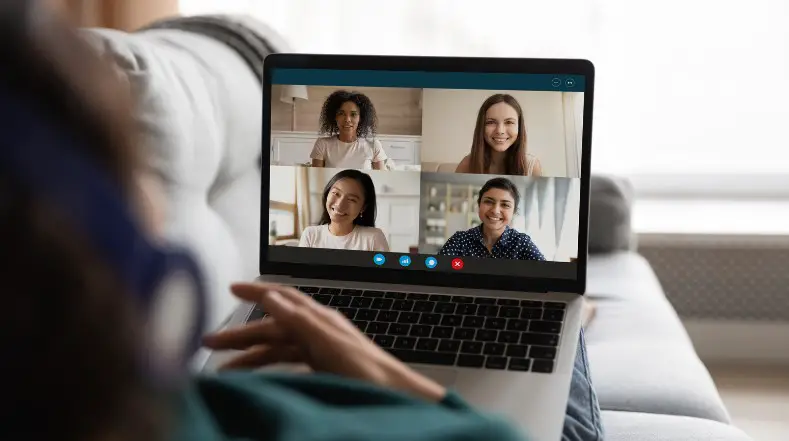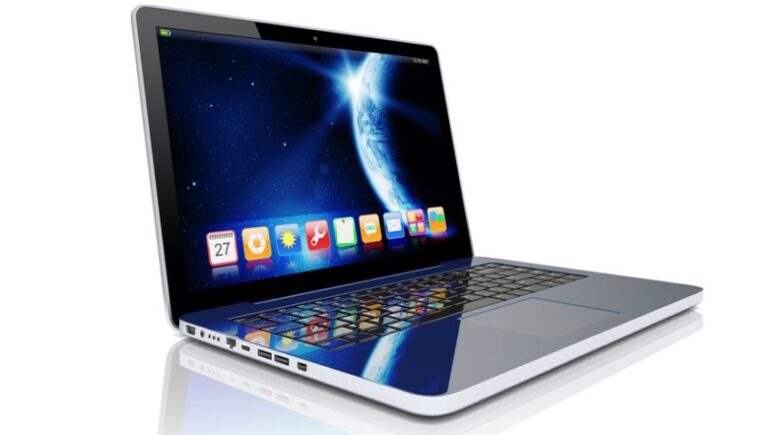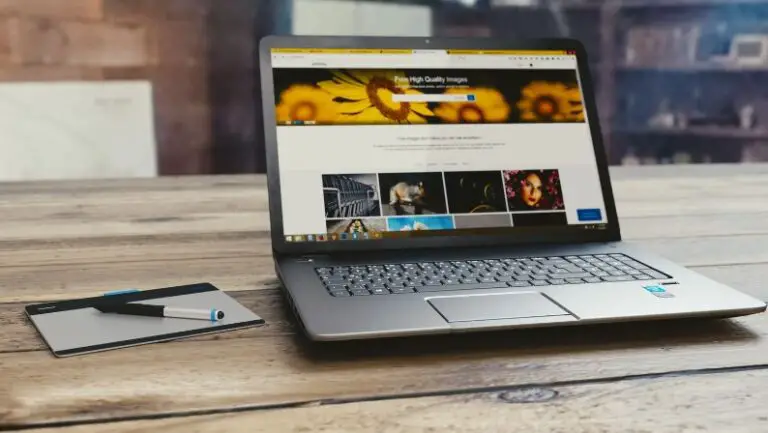How Far Can A Laptop Webcam See?
It seems like laptops are everywhere these days. We use them for work, entertainment, and even to stay connected with family and friends. But have you ever stopped to think about how far your laptop’s webcam can see? It might surprise you just how much information it can gather from the comfort of your home or office. In this article, we’ll explore exactly what a laptop webcam is capable of seeing – and why it should be taken seriously when it comes to our online security.
We’ve all heard stories of hackers using webcams to spy on unsuspecting victims, but do they really have that kind of reach? The answer may not be as simple as yes or no. Webcam technology has come a long way in recent years, so it’s important to understand just how far those cameras can stretch before writing off the possibility altogether. Let’s take a look at what makes modern webcams such powerful tools for spying – and why knowing their capabilities could help keep us safe online.
From watching our pets while we’re away to keeping tabs on loved ones, webcams offer an added layer of convenience in our lives today. However, if used improperly they can also pose serious privacy risks. Knowing how far a laptop webcam can actually “see” is essential in ensuring that our data remains secure and protected against malicious actors looking to exploit vulnerable systems. So let’s dive into the details behind laptop webcams and find out how far they really go!
Webcam
A webcam is a video-capturing device that attaches to your computer, laptop, or smartphone. It’s used for capturing photos and videos. A laptop webcam is specifically designed for laptops, while a PC camera is typically found on desktop computers. They both serve the same purpose: allowing people to communicate visually over the internet.
The technology behind webcams has improved exponentially in recent years, enabling them to capture higher resolution images and videos with more detail than ever before. Webcams come in various shapes and sizes, from minuscule USB models to large professional cameras mounted on tripods or stands. The range of features they offer also varies widely including wide angle lenses, night vision capabilities and adjustable focus settings. With so many options available it can be confusing when trying to decide which type best suits your needs. Luckily, we’ll explore each type of webcam further in this article to help you make an informed decision.
Types Of Webcams
Transitioning from the previous section, there are several types of webcams available for laptops. From built-in to external models, laptop users have a range of webcam choices with varying capabilities. Understanding each type and their features can help determine which is best suited for one’s needs.
Built-in webcams come installed in many modern laptops and offer basic video calls. These cameras tend to be small but provide good clarity when using popular applications like Skype or FaceTime for basic video calling purposes. However, due to their size, these cameras may not have the best visual range compared to other webcam types.
External webcams connect via USB ports on laptops and typically feature higher resolution than most integrated camera systems. These devices also allow users to adjust focus manually during video calls, providing greater flexibility than most built-in models. External webcams usually offer better visuals at longer ranges than standard integrated solutions as well.
USB webcams are similar in design and usage to external ones, although they require fewer setup steps since no installation is necessary. Like external options, USB models generally produce clearer pictures at long distances compared to built-in versions. Furthermore, they often include additional features such as auto focus or automatic white balance adjustment that further improve image quality over traditional integrated systems.
No matter which type of webcam a user chooses for their laptop, it’s important to consider factors such as visual range and picture quality before making a decision about which one is right for them. With so many different options out there today, understanding what each offers will go a long way towards ensuring an informed purchase decision is made when selecting the perfect webcam for a laptop computer system.
Factors Affecting Visual Range
The range of a laptop webcam’s vision is determined by several factors. Distance will play the most significant role in this equation, as the farther away you are from your camera lens, the less it can see. The angle coverage of the camera and its field of view also has an impact on how much it can capture. Camera resolution plays a part too; higher resolutions allow for greater detail over long distances.
These three elements work together to determine just how far your laptop webcam’s vision extends. When combined with other variables like lighting and focus, they comprise a complex system that affects what you can see through your device’s lens. Knowing these details helps us understand our cameras better and gives us more control over their capabilities. With such knowledge we can make informed decisions when deciding on resolution ranges or angles that best suit our needs.
Determining The Quality Of Camera Resolution
As the old saying goes, seeing is believing. When it comes to laptop webcams, how far they can see isn’t as important as determining the quality of the camera resolution. Here are a few factors that will help you assess what type of image clarity rating your laptop webcam offers:
- Camera Clarity Levels: Different cameras offer different levels of clarity. The higher the level, the better and more detailed images you’ll get from your laptop webcam.
- Webcam Image Quality: Some cameras have low-quality images due to poor lenses or lack of proper lighting conditions in the room. Evaluate whether or not your webcam has enough light for clear visuals before making any decisions about its performance.
- Laptop Video Quality: Many laptops come with built-in webcams that offer varying degrees of video quality depending on their model and make. Make sure to research which models provide good video quality when shopping for one online or at a store near you.
Knowing these key points about assessing camera resolution quality can give you an idea of how well your laptop webcam performs and what kind of picture clarity it provides. From there, you can decide if it’s suitable for whatever use you intend for it – be it streaming live events, conducting virtual meetings, taking pictures, etc..
Uses For Laptop Webcams
Laptop webcams come in handy for a variety of purposes. From video conferencing to online streaming, laptop webcams offer users the ability to capture and transmit videos with ease.
| Uses | Benefits | Limitations |
|---|---|---|
| Video Conferencing | Connects people from different locations Saves time & money on travel expenses |
Poor quality visuals if bandwidth is low Sound can be distorted due to background noise |
| Online Streaming | Streams content or footage live across the internet Allows anyone around the world to watch events as they happen |
Heavy data usage can cause lags or buffering issues Expensive equipment needed for some types of streaming |
| Video Calling | Enables two-way communication between users Gives feeling of being together even while apart |
Quality depends on connection speed Video lag can occur during calls depending on conditions |
Due to their small size and portability, laptops are an excellent choice for video recording needs. A laptop webcam’s range largely depends on its specs; many have wide-angle lenses that allow them to see far away objects more clearly. For everyday use, most laptop cameras will provide adequate clarity up to 10 feet away from the device. However, it’s important to note that lighting has a major impact on how well your camera performs too – dark environments may result in reduced visibility. All these features combine to make laptop webcams great tools for both personal and professional applications. With proper adjustment and setup, users can easily record high-quality videos with just about any model of laptop webcam available today.
Security Considerations
When it comes to protecting your home and personal information, laptop webcam security should be taken seriously. Though the convenience of webcams can make our lives easier in many ways, they can also be used maliciously if not properly secured. Here are five considerations when ensuring laptop camera security:
- Regularly update software and anti-virus programs on all devices with a webcam
- Ensure malware protection is enabled
- Cover cameras or disable them when not in use
- Change default passwords for device access
- Use encryption services for secure communication
Proper security measures must always be employed to protect against unauthorized use of webcams. A single misstep could lead to severe repercussions such as identity theft or invasion of privacy. With these steps, however, you can rest assured that your data will remain safe. Now let’s look at how troubleshooting tips can help address any unexpected issues with your laptop’s webcam.
Troubleshooting Tips
The laptop webcam is an essential component of today’s computing experience, but it can be difficult to diagnose and fix problems when they arise. Knowing the right troubleshooting techniques can help you quickly resolve any issues with your laptop camera.
| Troubleshooting Tip | Description |
|---|---|
| Check Level of Zoom | Adjust the zoom level on your webcam to ensure that objects are seen clearly from far away or up close. This will allow for a better overall view of whatever you’re trying to capture with your camera. |
| Update Firmware/Software | Always make sure that you have the latest version of firmware/software installed in order to get the most out of your webcam capabilities. Doing so may also prevent future compatibility issues related to hardware and software upgrades. |
| Clean Camera Lens & Surrounding Area | Make sure that all dust and debris around the lens area is removed regularly as this can affect image quality significantly over time. Additionally, wiping down the lens surface itself also helps improve clarity while using your laptop webcam. |
When it comes to fixing laptop camera problems, these tips should prove useful in helping diagnose and rectify them efficiently. If further assistance is needed, contact customer service or consult manufacturer’s user manual for more detailed instructions specific to model type. With some practice and patience, identifying and resolving any issues associated with one’s laptop webcam should become second nature!
Frequently Asked Questions
What Type Of Laptop Webcams Are Best For Video Conferencing?
We’ve all had to use video conferencing for work or school at some point, but how do you make sure the quality of your call is top notch? The answer lies in finding the best laptop webcams for video conferencing.
When it comes to choosing a webcam for video conferencing, there are several factors that come into play: resolution and frame rate; compatibility with different operating systems; sound and microphone capabilities; connection type (wired/wireless); and lighting management. Knowing which features are most important will help you determine which laptop webcam is right for you.
A good starting point when looking at laptop webcams is their resolution and frame rate – these two metrics give us an indication of just how crisp our images will be onscreen. Look out for ones that offer HD 1080p resolution. Additionally, while 30 frames per second (FPS) should suffice, if possible try to find one with 60 FPS as this helps reduce any lag time during the conversation.
The next thing to consider is making sure the laptop webcam can support your preferred OS so that you don’t have any trouble setting it up by yourself later down the line. If sound quality matters to you then look out for models equipped with noise cancelling microphones too. Some even go as far as having built-in speakers!
Finally, many modern laptop webcams now feature active lighting technology so that they automatically adjust illumination levels according to available light sources in order to deliver clear visuals no matter where you’re located or what time it is. This means less hassle fiddling around with settings prior to each call – perfect if you’re someone who often finds themselves hopping from one meeting room or home office location to another!
In short, picking the best laptop webcams for video conferencing boils down to understanding your needs and preferences before investing in one:
- Resolution & Frame Rate – look out for ones offering HD 1080p resolution and preferably 60 Fps
- Operating System Compatibility – ensure it works with your chosen OS without needing additional software downloads
- Sound & Microphone Quality – opt for noise canceling mics plus built-in speakers if desired
- Connection Type – choose between wired or wireless connections depending on your preference
- Lighting Management – cameras featuring active lighting tech provide better visuals regardless of the environment
With such a wide range of options available nowadays, selecting a great laptop webcam doesn’t need to be difficult! As long as you know what kind of performance requirements you want from your device, finding one tailored specifically towards delivering optimal results during meetings shouldn’t take much effort either.
How Can I Protect My Laptop Webcam From Hackers?
Protecting your laptop webcam from hackers has become a top priority for many individuals. Hackers can access and use webcams to their advantage, but there are steps you can take to keep them out of your device. Here are some tips on how to protect your laptop webcam from hacker threats:
- Webcam Security:
- Invest in firewall protection that will alert you if someone is trying to gain access or control of your webcam.
- Install anti-malware software onto your computer, which will help detect any malicious activity that could be caused by hackers attempting to gain access.
- Enable two-factor authentication for all accounts connected with the laptop; this adds an extra layer of security against potential intrusions.
- Laptop Security:
- Make sure that the operating system on the laptop is up-to-date so it includes the latest patches and bug fixes available.
- Regularly update software programs installed on the laptop as these updates often include security enhancements.
- Ensure passwords used on the laptop are strong and unique; avoid using easily guessed combinations such as birthdays or pet names.
- Protect Your Webcam:
- Physically cover the lens when not in use; simple solutions like post-it notes, tape, or even stickers work well here.
- Use encryption tools such as Tor to browse anonymously online and prevent hackers from tracking activities across networks.
- Keep your eyes open for suspicious emails and links; always verify who sent them before opening anything attached or clicking through to websites they direct you towards—especially those asking for personal information!
Overall, taking proactive steps now can save you time and money down the line should a hacker attempt to breach your laptop’s security via its webcam. To stay safe, make sure you’re investing in reliable firewall protection, updating both hardware and software regularly, monitoring activity closely (including incoming emails), encrypting data when browsing online, and physically covering lenses when not in active use. Taking these precautions will give you peace of mind knowing that your valuable digital assets remain secure from prying eyes!
Are Laptop Webcams Compatible With Other Devices?
Are laptop webcams compatible with other devices? This is a common question among those considering purchasing one of these handy tools. When it comes to laptops and webcams, compatibility is key if you want to use video chat or take advantage of the camera’s features on multiple platforms. Fortunately, most modern laptop cameras are designed with this flexibility in mind, allowing them to be used with a variety of different devices.
For example, many current models can be connected directly to smartphones or tablets via USB cable. Additionally, they can also be used with PCs and Macs, as well as gaming systems such as Xbox and PlayStation consoles. This makes for great versatility when it comes to using your webcam for streaming services like Twitch or Mixer; plus, being able to switch between various devices without having to buy different hardware saves time and money!
So whether you’re looking for an affordable way to stay connected via video conferencing or just need something reliable enough for streaming games online, investing in a quality laptop webcam could be the perfect solution. With its versatile design and wide range of supported devices, you’ll have no problem finding a setup that works best for your needs.
How Do I Adjust The Focus On My Laptop Webcam?
Adjusting the focus on a laptop webcam can be tricky, but it’s an important step to obtain clear images. If you want your laptop webcam to capture crisp and accurate images, then learning how to adjust its focus is essential.
Fortunately, most laptops come with settings that allow users to easily adjust their webcam’s focus. Depending on your device, these settings will either appear in the laptop’s control panel or in the video settings of the webcam itself. The specific steps for adjusting focus may vary slightly across devices, but generally speaking, you’ll need to access the camera properties page by right-clicking on the image displayed by the webcam. Once there, look out for options related to focusing such as “Auto Focus” or “Manual Focus” which will give you greater control over how sharp or blurry your images are.
If this fails to provide any improvement in clarity, then try tweaking other settings like brightness and contrast which should help bring out more detail from your videos and photos. Additionally, if available, using digital zoom can also improve picture quality so make sure you explore all of your options before settling on one setting. With just a few tweaks here and there, you should be able to get crystal clear imagery from your laptop webcam without too much difficulty.
What Are The Advantages And Disadvantages Of Using A Laptop Webcam?
Laptop webcams are a convenient tool for video conferencing and other digital communication. But what about the advantages and disadvantages of using one? Let’s take a look at how laptop webcams can help or hinder your technology experience.
One great advantage to having a laptop webcam is that it enables you to have face-to-face conversations with people all over the world via video conferencing software. This allows you to stay connected with family, friends, or colleagues no matter where they may be located. It also makes it easier to collaborate on projects remotely without needing to travel long distances. Additionally, many laptops come equipped with built-in webcams that make them easy to use right away without any extra setup required.
On the flip side, there are some security concerns associated with using laptop cameras as well. For instance, if you share sensitive information through your webcam such as passwords or bank account numbers, this data could be intercepted by hackers or malicious actors who might be able to gain access to your computer in order to steal valuable information from it. Additionally, not all laptops have compatible webcams so if you’re looking for specific features like high resolution images or smooth motion capture capabilities then you should check first before making an investment in a new camera.
In terms of overall usability, laptop webcams offer plenty of benefits but also come with certain drawbacks too. If you weigh these carefully against each other then you should be able to decide whether investing in one is worth it for you in the end.
Conclusion
The laptop webcam has come a long way since its invention. It has been an invaluable tool for connecting with friends and family, or even making business connections from afar. But how far can it really see?
Just like the world around us, our laptop webcams have limits. They may not be able to reach out across vast distances in order to take in every detail of the scene before them, but they certainly are capable of capturing important moments that we would otherwise miss. The image quality is often more than adequate to communicate effectively with others and make meaningful connections through video conferencing technology.
Despite their limitations, laptop webcams remain incredibly useful tools for staying connected with those who matter most—and that’s something worth celebrating! With strong security features and adjustable settings, users can rest assured knowing their private conversations will stay safe while enjoying clear images on their screens. Ultimately, there’s no one right answer when it comes to how far a laptop webcam can see; it all depends on the user’s individual needs and capabilities. Regardless of what lies ahead, laptop webcams provide a reliable means of keeping up with loved ones near and far.







